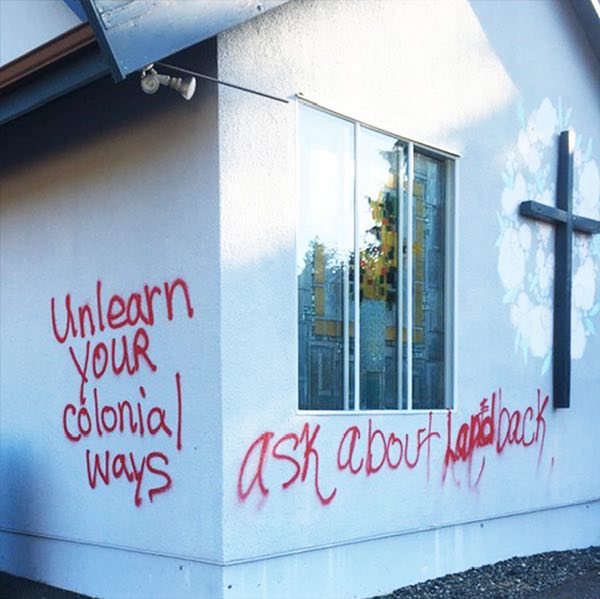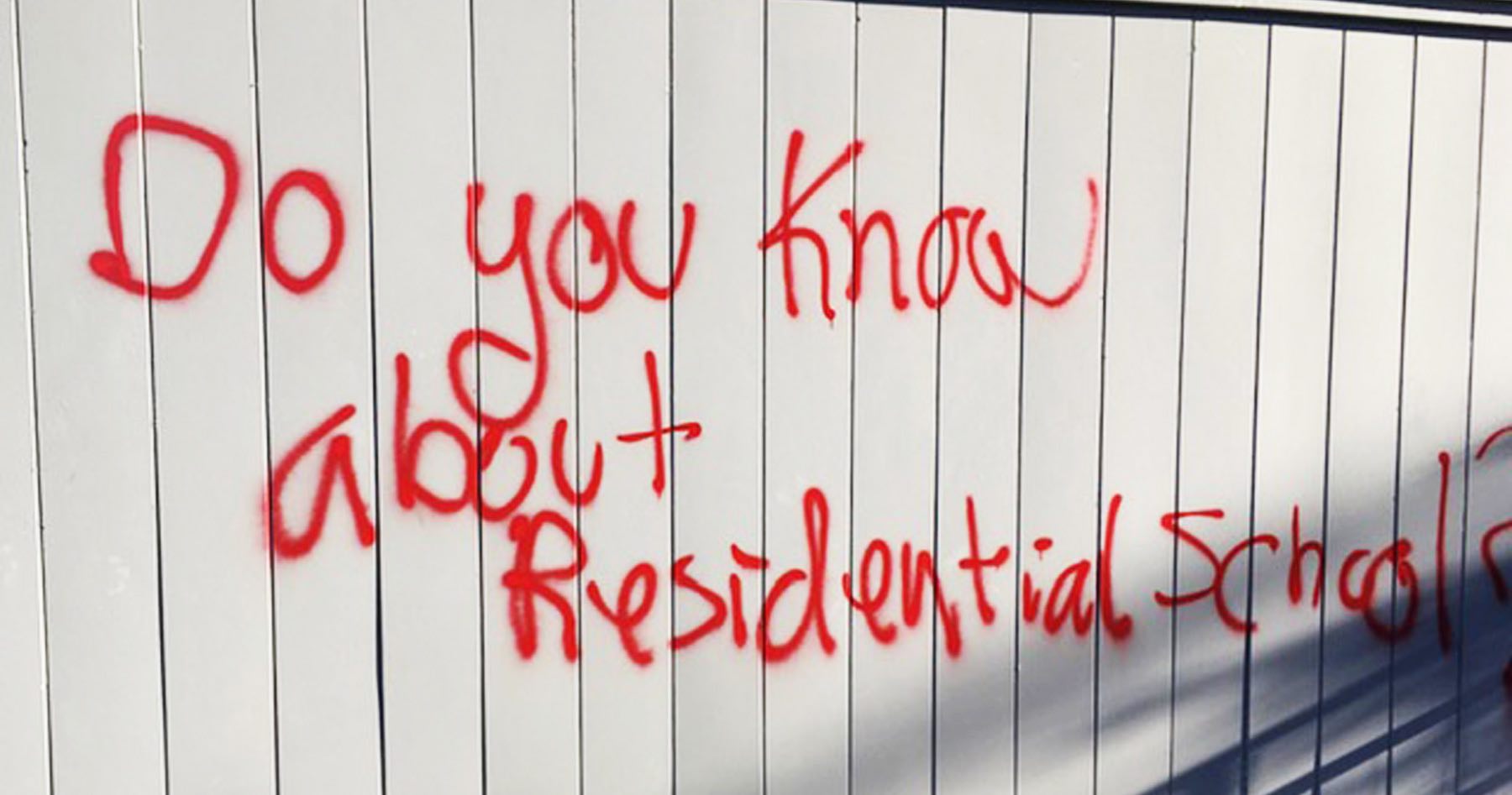On the morning of Monday, September 13, I arrived at St. Philip, Oak Bay, to discover that the outside walls and all the signs and walkways had been spray-painted with bright red and orange slogans.

Everywhere I looked I saw messages such as “No pride in genocide,” “6000+ murdered and missing,” and “This is Indigenous Land.” The impact was powerful and deeply disturbing.
As I reflected on my feelings throughout the day, I realized that the depth of my discomfort, pales into insignificance compared to the pain and tragedy experienced by parents whose children were forcibly removed from their families, in some cases never to be seen again. Nothing I or our community experienced on Monday morning, or over the following days, compares to the horrifying events in our history that have given rise to the level of pain and anger expressed in paint on the exterior of our church building.
In 1993, the then-senior bishop of the Anglican Church of Canada offered to the Indigenous peoples of this land a complete unqualified apology for our institution’s part in administering the Indian Residential Schools system. He said: “I accept and I confess before God and you, our failures in the residential schools. We failed you. We failed ourselves. We failed God. I am sorry, more than I can say, that we were part of a system which took you and your children from home and family. I am sorry, more than I can say, that we tried to remake you in our image, taking from you your language and the signs of your identity. I am sorry, more than I can say, that in our schools so many were abused physically, sexually, culturally and emotionally.”
Archbishop Michael Peers gave no excuses with this apology. He did not make any attempts to justify the church’s role in the atrocity of enforced removal of children from their homes and the attack on their culture. He did not excuse the behaviour of the past or attempt in any way to make light of the terrible devastation brought by a system that sought to destroy the lifeblood of the original inhabitants of this land.
We make no excuse today. The actions of the church in administering a wicked system were wrong. Our ancestors participated in a program that unleashed a tragic torrent of pain and brokenness from which many people still suffer today.
Graffiti can be removed from buildings. Walls can be painted over. Signs can be restored. But the work of rebuilding respectful relationships with people whose lives have been shattered by violence and abuse is not so easy.
As a church, our desire is to be a vehicle for healing and hope for all people. We seek to support one another in growing in kindness and honouring all people, especially those who are most marginalized, neglected and abused in our society.
The journey to healing is long and hard. It requires deep listening and profound humility on the part of those who are part of the dominant caste in our society.
We may have painted over the spray paint on our church, but we do not want to paint over the horrors of our history. We want to acknowledge the wrongs of the past. We want to listen to the voices of those who feel compelled to express themselves in red and orange spray paint. We want to learn and become a source of light in the midst of the dark.



